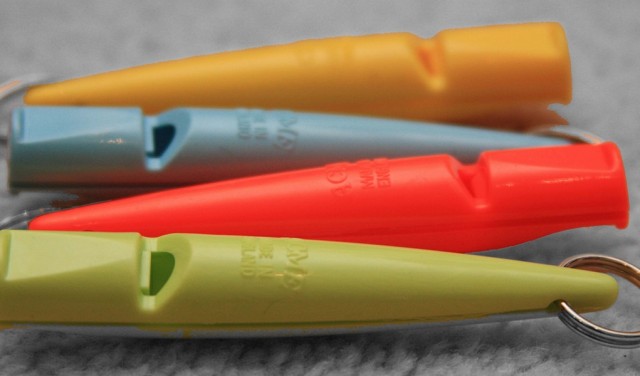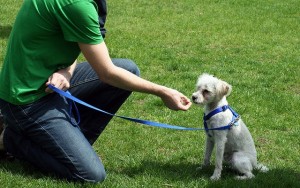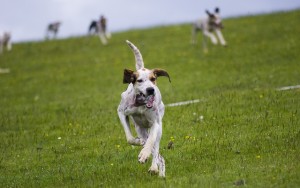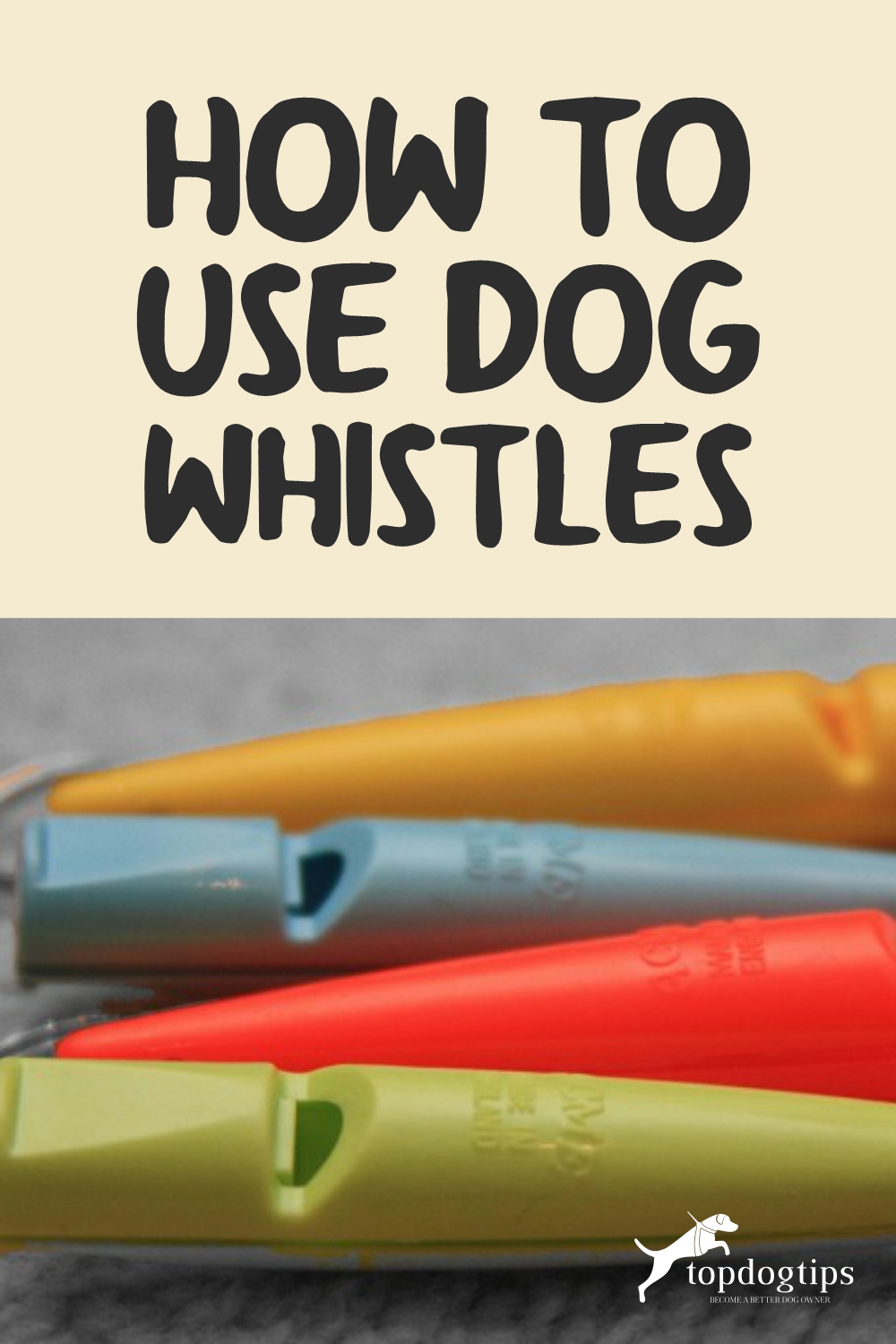
Table of Contents
The dog whistle operates at a higher frequency than the average human is able to hear but that a canine can decipher.
Developed by Francis Galton in 1876, the dog whistle has become the go-to tool for owners looking to get the attention of their dogs without disturbing other humans.
However, it isn't as simple as it sounds, and you have to know how to use dog whistles in order to make them effective.
The original environment for the usage of the dog whistle was, in fact, the hunting range where hunters wanted to be able to communicate with their dogs without alerting nearby animals.
When inventing the whistle, Galton theorized that dogs and cats had a higher hearing frequency in the first place in order to catch small rodents and other tiny animals that they preyed on.
Basing his invention on this discrepancy, Galton was able to use the difference in humans’ and dogs’ hearing levels to create a subtle yet effective disciplinary and attention-getting tool.
Mastering the technique of how to use dog whistles is an important tactic for owners looking to discipline and train their dogs to obey commands effectively.
Distance training is where the dog whistle comes in most handy.

When you're taking your dog outdoors or into the woods, it is imperative to teach him to obey a call-and-response.
You can also train dogs with a dog whistle in using simple behavioral training.
It's not as effective, and there are easier ways to train your dog to obey commands.
For more information on dog behavioral training and house training, check out our columns:
- Dog Training Basics: 11 Essential Tips
- Puppy Training 101: Basic Walkthrough
- How to Train a Puppy?
- Top 21 Must-Know Dog Training Tips
You'll find information in there that will pertain to behavioral training and command.
Again, a dog whistle could be used to assist, but it really wouldn't be much help in these situations.
As I mentioned, dog whistles are most commonly used with hunting dogs for distance training.
Top 5 best-selling dog whistles on Amazon:
- Dog Whistle for Barking and Training
- ACME Dog Training Whistle
- FANZ Ultrasonic Dog Whistle
- ECOBHA Dog Whistle
- STOPWOOFER Ultrasonic Dog Whistle to Stop Barking

High-Frequency Training: How to Use Dog Whistles
Before attempting the first command, the dog whistle does require some getting used to.
Practice with it almost as though you’re learning a new musical instrument (the one you can’t hear).
It’s like using any average recorder or mouthpiece.
Blow into it and adjust the amount of air you’re pushing through when you want to change the length of the notes.
RELATED: 30 Best Hunting Dogs for All Types of Game

Before beginning whistle training, you must also be sure that your dog obeys a silent command first.
For example, a non-verbal command to “sit” can take the form of a raised palm.
If your dog isn’t familiar with that and requires verbal commands, teaching him to obey a raised hand must be done first.
Once you’ve mastered that, you can move on to whistle training.
If your dog is competent at understanding and following non-verbal commands, you can begin whistle training.
Commands to Teach with Whiste Training
When your dog is far from you, the most likely commands you’ll have for him will be to sit down, come, and change direction.
Training your dog to obey these three commands is an excellent starting point for any owner looking to go outdoors with their dog.
When first discovering how to use dog whistles, these commands are typically the easiest to master.
Command #1: Sit
The first command, “sit,” is the one that should be taught initially.
Throughout the training, it is important to remember that consistency is the key to success.
Once you’ve settled on a distinctive pattern for each command, stick with it.
The dog will have a hard time attempting to follow a bunch of different patterns and command signals if you keep changing them.
When you first begin working with the dog, blow the whistle and raise your hand at the same time.
You need to familiarize him with the link between the “sit” sign and the whistle pattern you use (for instance, do one long blast).
After the dog masters a close distance, start moving backward.
As the distance increases, keep the training steady.
It takes a lot of effort and time to complete this whistle training, but the results are worth the effort.
A quick tip: If your dog attempts to disobey the command and run towards you, repeat the whistle blow for further emphasis.

Command #2: Return/ Come
The second command is a return command, which is a step up from the “sit” order.
The dog whistle needs to cut through any possible temptations or distractions that the dog is experiencing, even when he might not be able to see you up close.
Once again, start by practicing from a close distance using a nonverbal gesture and the whistle at the same time.
The gesture can take the form of extending your arm out to the side or beckoning, whichever the dog is most comfortable with and responsive to.
If you need extra enticement for the dog, you can even have a treat with you.
Increase the distance further and continue with the same whistle pattern.
Just like with the other command, this may take a while.
RELATED: No More Pain: Best Alternatives to Dog Shock Collars
Command #3: Change Direction
After the “sit” and “come” commands are mastered, it is time to teach your dog to change directions while running.
This is slightly more complex, as the directions can vary, and there isn’t a set response to the whistle alone.
When teaching your dog this command, it’s important that he can see you in order to know which direction you want him to go in.
While this still qualifies as distance training, you can either keep the dog within sight of you to teach him to change directions or you can use different whistle blast patterns to signal which direction (right or left) you want the dog to turn to.
Things to Remember When Whistle Training
While learning how to use dog whistles, there are a few things you should remember…
1. Dog whistle training process may become repetitive and even frustrating for you and your dog, especially since you’re using something that you can’t actually hear.
However, these skills that you’ll be able to teach your dog are extremely valuable.
2. While GPS trackers, microchips, and other technology serve as extremely fortified ways to make sure that your dog will be found if he runs away, it is always extremely useful to have a dog whistle with you.
This way, you can call back your dog or at least sit them in one place if they get too far off.
3. Be sure to use positive reinforcement when training your dog continuously.
If you consistently reinforce your dog's obedience to the whistle by offering him dog treats occasionally, it will have a positive effect on his overall success.
Whistle training really isn't much different than any other type of dog training.
It's all about getting your dog to understand the form of communication you're using, whether it is voice commands or whistle sounds.
You just need to be patient as the dog learns, and eventually, you will be on the same page.
As your dog's skill grows, you can continue to build on his skills and expand his knowledge.
No matter what you'd like to teach him, it can be done with time, patience, and a dog whistle.
WANT TO SHARE THIS?
Disclosure: We may earn affiliate commissions at no cost to you from the links on this page. This did not affect our assessment of products. Read more here and find full disclosure here.













